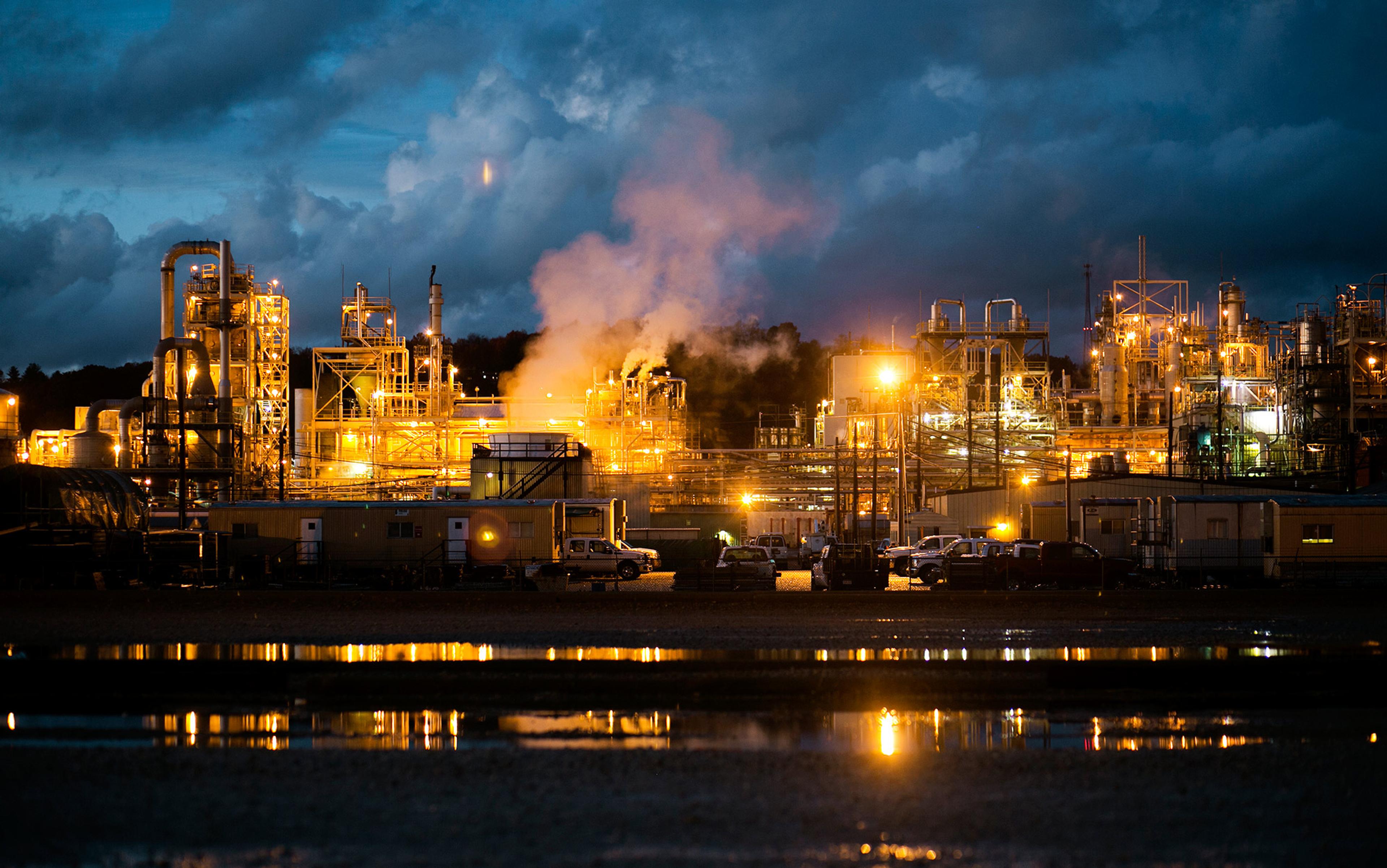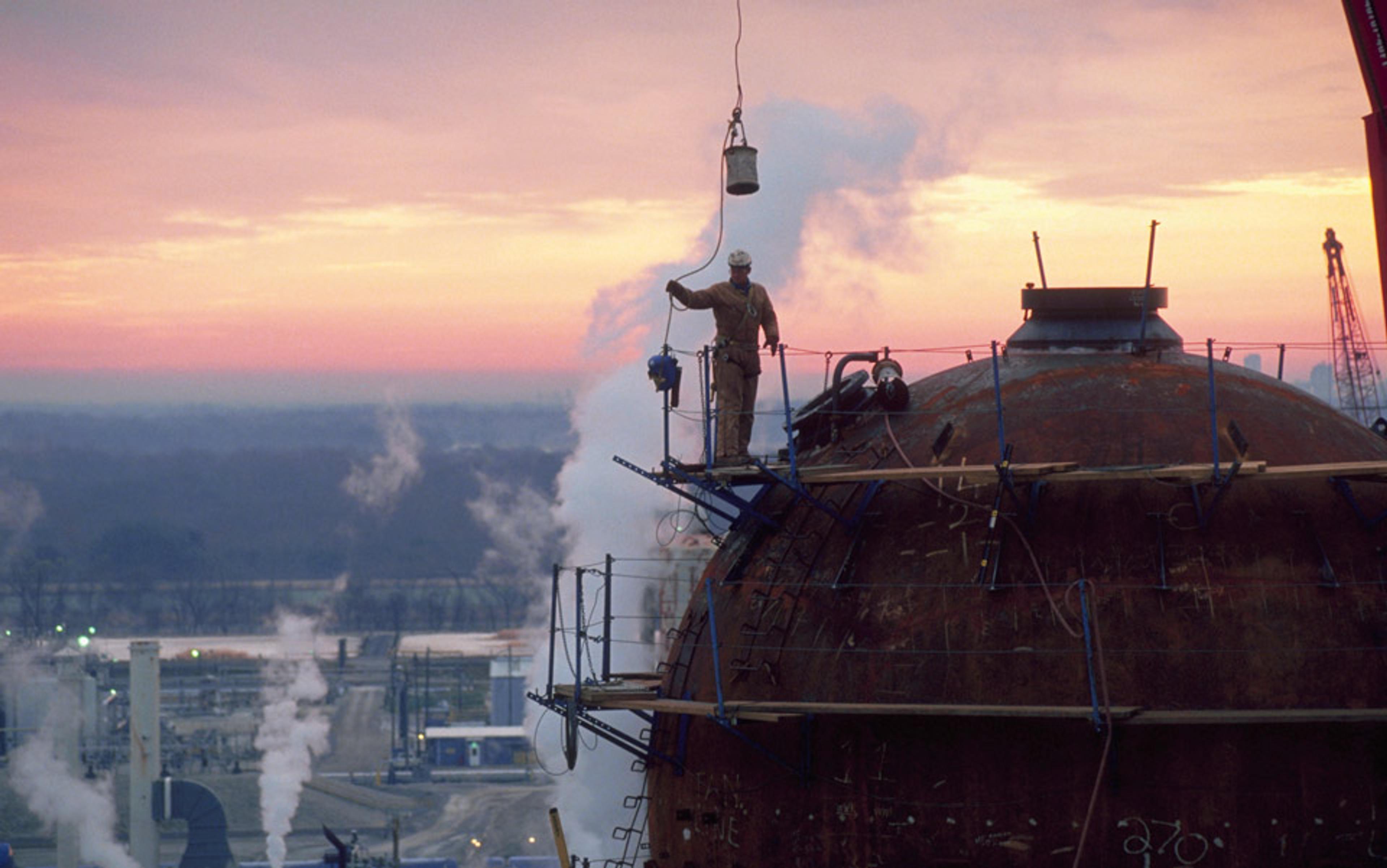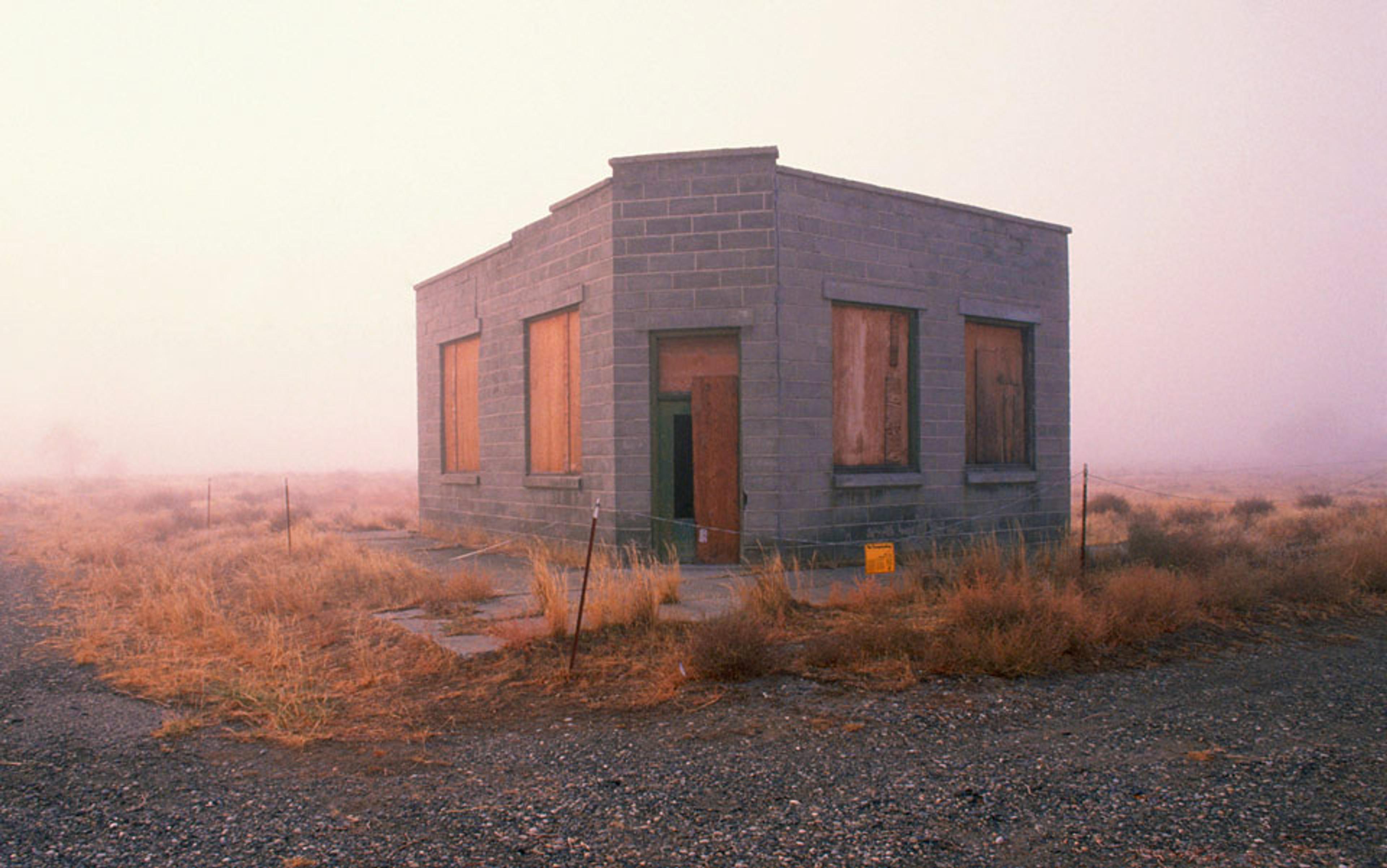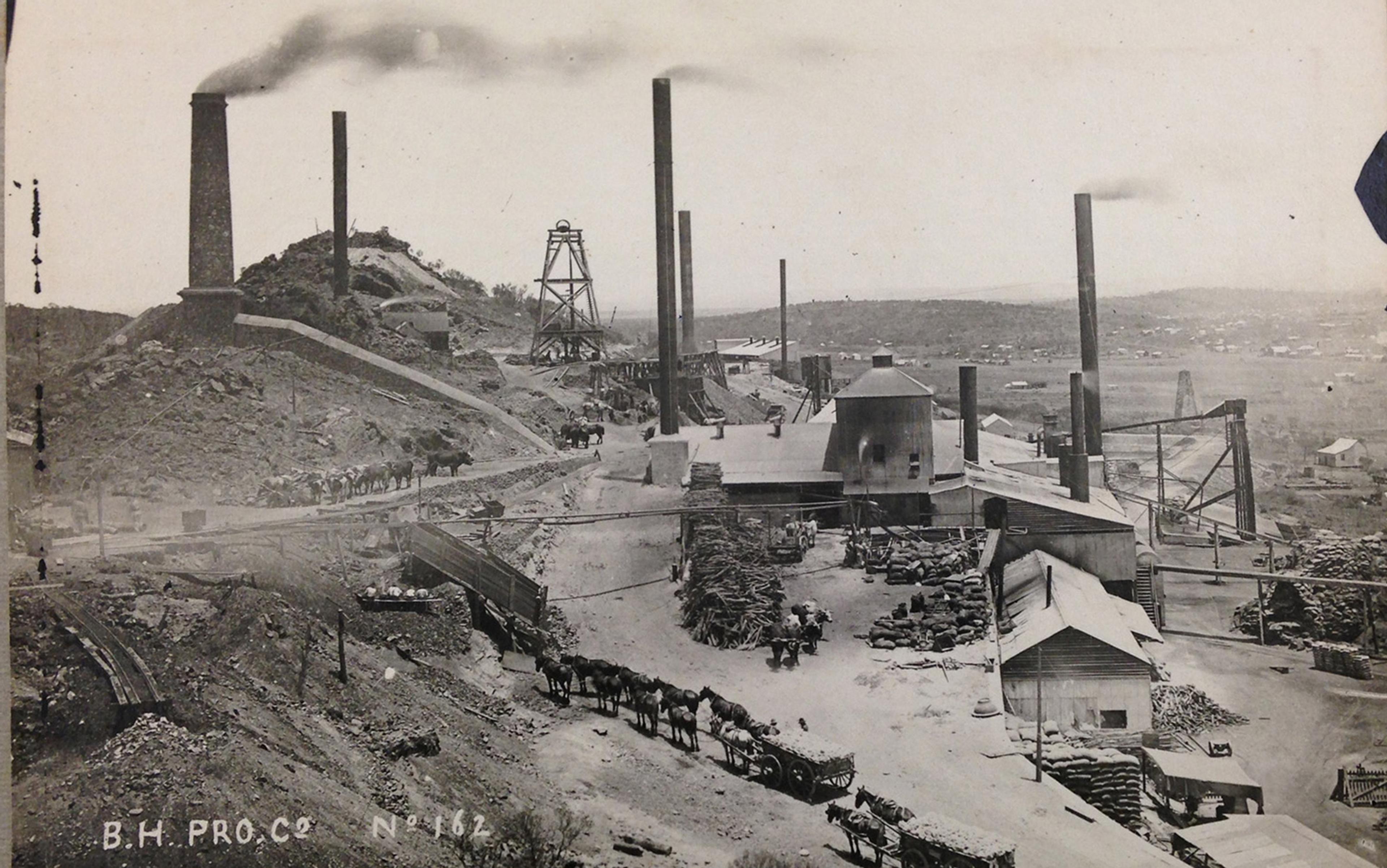In September 1938, the fall before the New York World’s Fair opened, a 5,000-year time capsule was planted 50 feet beneath the Flushing Meadows fairgrounds. The capsule was 7.5 feet long, made of Pyrex glass and alloyed copper (called Cupaloy), and shaped like a torpedo – a long, thin metal shaft with a cone-shaped nose.
This wasn’t the first example of a time capsule. But it was the first use of the term, although its mastermind, G Edward Pendray, briefly – and, as it turns out, tellingly – had considered calling it a ‘time bomb’ instead. Pendray was the publicist for the Westinghouse Electric Corporation, and his time bomb was a ‘master stroke’ of public relations, a clever scheme to retool Westinghouse’s image as forward-thinking, and to best its rival, General Electric, founded by the showman-scientist Thomas Edison.
‘Our scientists have shifted the atoms in their lattices … [creating] stuffs that nature herself forgot to make,’ wrote Pendray in The Book of Record of the Time Capsule of Cupaloy (1938), his missive to the ‘futurians’ of 6939 CE, the year of the capsule’s intended unearthing. Within, he noted, they would find a light bulb, a safety pin, a slide rule, a telephone, Elizabeth Arden cosmetics, $2.91 in cash, a plastic Mickey Mouse cup, the 14th edition of the Encyclopaedia Britannica inscribed onto acetate film, and also 75 samples of the era’s most advanced materials, including technologies such as Tungsten filaments, asbestos shingling and DuPont’s just-invented synthetic fibre, Nylon. Millions visited the time capsule, peering by periscope into what Pendray called its ‘immortal well’. On the autumnal equinox of 1940, the month before the fair closed, Westinghouse sponsored a private send-off. Speeches were made. A gong sounded. At high noon, 500 more pounds of hot sealant – a proprietary blend of pitch, mineral oil and a chemical compound called chlorinated diphenyl, known today as polychlorinated biphenyls (or PCBs) – were poured into the well.
Westinghouse engineers said that the compound would last for thousands of years. Indeed, Westinghouse saw its first ‘time bomb’ as a nod to legacy itself. To leave a legacy is to gift something of meaning or value. For Westinghouse, technology and legacy were entangled ideas.
Today, PCBs are a notorious class of global pollutants and carcinogens capable of interfering with human fertility, development, cognition and immunity. Though human-made, biology recognises and can even interact with them. PCBs are everywhere, and by design, they endure. Banned by international treaty, they nonetheless live on in relic electrical equipment such as light ballasts and transformers, in riverbeds, and even in creatures of the extreme deep. Scientists now call most PCBs legacy contaminants – enduring poisons from the past.
That technology could impose itself on the future was a revelation of the Nuclear Age. The geneticist Hermann Muller, recipient of the 1946 Nobel Prize in Physiology or Medicine, reprised the term ‘time bomb’ in his essay ‘Time Bombing Our Descendants’ (1948). A bomb will kill ‘more in the future’ than when it explodes, Muller wrote. Nuclear technology introduced a new kind of legacy, one read into the body and carried there through time.
Radiation biology began to measure the load that bodies were bearing. ‘Body burden’ was one of a handful of new terms emerging from the project to count, map, compare and normalise the dispersion of the bomb’s legacy across people, space and time. Other new phrases in the nuclear lexicon included ‘hot spot’, ‘sacrifice zones’, ‘background levels’ and ‘half-lives’.
As the Chemical Age dawned, environmental science adapted this language to explain its emergent understanding of ‘a new kind of fallout’, as Rachel Carson put it the 1960s. Then, during the 1990s, the phrase ‘legacy contaminants’ entered the vernacular alongside concerns over the health of the Great Lakes of North America. The area’s wildlife was in decline due to PCBs and other out-of-production compounds. But PCBs weren’t behaving in the ways that toxicology expected. Exposures borne by one generation manifested differently down the line, causing subtle shifts in fertility, metabolism, immunity, cognition and development. The PCBs were interrupting the fine-tuned work of hormones, biology’s biochemical messengers, and thus interfering with critical communications across a host of networks orchestrating organic life.
The late scientist Theo Colborn synthesised multiple literatures to arrive at this insight, first presented in her book Great Lakes, Great Legacy? (1990). In time, Colborn’s work became the basis for unravelling the process of endocrine disruption, now understood as another suite of biological mechanisms – this one involving hormones – by which one generation time-bombs another.
Fluorocarbons have altered the biochemical composition of the food web and the interior of the human body
In this, PCBs are not exceptional. Other legacy contaminants now include perfluorooctane sulfonate (PFOS), the chemical behind stain-repellent textiles. The same United Nations treaty – the Stockholm Convention on Persistent Organic Pollutants – that banned PCBs has since added PFOS. The fluorocarbon cousin of PFOS – PFOA (perfluorooctanoic acid), which was removed from US production in 2015 – could soon be added to the Convention as well, joining PCBs and PFOS as chemicals that should no longer be made, though they will remain in environmental circulation indefinitely. PFOA and PFOS both belong to a family of compounds called PFASs, short for per- and polyfluorinated alkyl substances, or what chemists once called fluorocarbons.
Fluorocarbons matured in the churn of the Second World War, transforming from laboratory chemicals into mass-produced materials in a matter of years. After the war, fluorocarbons became the silent enablers of the 20th century’s greatest technological achievements – the bomb and also Teflon, the stuff of convenience cookware, spaceflight and implantable medical devices. Today, these fluorocarbons persist as legacy chemicals prevalent in water systems serving hundreds of millions of people around the world. So extreme is their persistence that science has yet to determine an environmental half-life – the point at which the environmental load would otherwise halve.
It’s fair to say that PCBs and fluorocarbons have altered the biochemical composition of the food web and the interior of the human body, and in the case of the PFASs, the water we drink. (Some PFASs can even fall with rain.) These have been swift, sweeping changes over the course of just three or four generations, too quick for the slow-grinding machinery of human evolution to adapt.
And yet, PCBs and PFASs are now an integral part of the human story. They pass from species to species, from mother to child. They are present from conception to death, and consumed with daily meals and holy feasts. The presence of PCBs alone shapes how humankind reproduces itself, how our young develop, and even whether subsequent generations will be susceptible to certain cancers or resilient against disease.
The implications are disturbing. Change a ship’s course by one degree, and in a decade, a century, a millennium, that ship will be sailing through entirely different waters. Subtle alterations barely perceptible today could mean profound changes in the lives of Pendray’s futurians and beyond. High-tech chemicals designed to endure, imagined as the stuff of an everlasting archive, will be read into the rock layer that marks our geological epoch. It is a vision that now reads as parable.
The story was set in motion by a quirky chemist named Joseph H Simons, who invented the method that 3M, the Minnesota Mining and Manufacturing Company, used to make PFASs for more than 50 years. During Simons’s graduate student days at the University of California, Berkeley, he began working with fluorine, a yellow-green and lethal gas. The element was known to burst into flames upon contact with water, and could burn through glass, steel, copper, silver, gold and even platinum.
By the 1930s, Simons was studying simple fluorocarbons and needed a small sample of one in particular – carbon tetrafluoride (CF4) – to make measurements. The only way to procure CF4 was to make it, and the only way to make it was to react fluorine with carbon, inviting an explosion. Simons built his own equipment to contain the blast, and hired a former football player – ‘fast and broad-shouldered’ – to run the process, teaching him to flee before the whole apparatus detonated.
Except, for weeks, nothing happened. No explosion. No carbon tetrafluoride in the collection vessel. Just a few drops of a clear, curious liquid. Eventually Simons realised that an old pipe, salvaged from a neighbouring lab, had been caked with mercury. The mercury had changed the chemistry so that the reaction yielded a breed of fluorocarbons that seemed inert and unassailable. To Simons, it meant that ‘chemistry’s hellcat’ could finally be tamed for development in the lab.
For industry, applications became more feasible only after Albert Einstein, Eugene Wigner and Leo Szilard wrote to the US president Franklin D Roosevelt forewarning of a German nuclear bomb in 1939. The US at once undertook a covert programme to stockpile and weaponise uranium, and make the bomb that could split atoms in a chain reaction of world-changing force.
Fumes wafted from the university’s windows, corroding the metalwork and shrivelling its iconic climbing ivy
To kick off such a reaction, Harold Urey, the Nobel Prize-winning chemist at Columbia University in Manhattan, required a rare, highly unstable form of uranium whose nucleus could easily be broken apart: Uranium-235 (U-235). Like culling wheat from chaff, U-235 had to be separated from uranium’s more prevalent isotope, U-238. For this, Urey and his colleagues – in what would become known as the Manhattan Project – devised five different methods, the most promising: gaseous diffusion, which concentrated (or enriched) uranium by pumping it through a semipermeable membrane.
This required uranium, a metal, to be converted into a gas, uranium hexafluoride, that could be streamed through the barrier, its surface designed to allow U-235 to pass through more readily. But to make uranium hexafluoride required combining uranium with the element that most chemists still feared: fluorine. And with no practical way to contain either fluorine or uranium hexafluoride, which was also as dangerous and reactive, the undertaking seemed like a long shot. Even Urey was skeptical. In short, what he needed was a class of never-built-before materials made to suit the harshest industrial environment yet conceived, and produced at a scale thought unfathomable.
In 1940, as the New York World’s Fair entered its final season, Urey recruited Simons and his fluorocarbons, assigned the code name ‘Joe’s stuff’. Simons had only ever eked out a couple of cubic centimetres, less than a teaspoon. But it was enough to confirm that his compound could withstand both gases. Those preliminary results encouraged the Manhattan Project to believe that they could harness fluorine into fluorocarbons, and develop fluorocarbons into sealants, gaskets, pipes and other factory parts.
Chemists soon descended on Columbia to work on ‘Joe’s stuff’. Fumes wafted from the university’s windows, corroding the metalwork and shrivelling its iconic climbing ivy. Meanwhile, Simons would split his time between Oak Ridge – the secret Atomic City that the Manhattan Project built in eastern Tennessee – where he worked on fluorinated war gases, and Pennsylvania, where he endeavoured to develop a safer method for producing fluorocarbons. He worked in parallel with the Manhattan Project, and at a fever pitch, as if the future of humanity hung in the balance. His kids rarely saw him. His health would soon plummet. What he achieved didn’t look like much, just a covered cauldron – a clunky, awkward metal vat ‘about as unimpressive as a washtub’, as Popular Mechanics put it. But it could brew up complex batches of fluorocarbons to help the cause.
In the end, the chemists in Manhattan developed other techniques to make the fluorocarbons that built the bomb that razed Hiroshima. Simons took his process to 3M. By 1944, the company had licensed it, and readied it for factory production in Hastings, Minnesota, along the upper Mississippi River.
Though the bomb sped fluorocarbons into development, it was another Manhattan Project-funded technology, polytetrafluoroethylene (PTFE), the then-new fluorinated plastic best-known as Teflon, that helped to broadcast them into the environment. Like Simons’s fluorocarbons, PTFE had been an inadvertent innovation. The DuPont chemist Roy Plunkett had been studying refrigerants, looking for an alternative to Freon, when in the spring of 1938 one candidate, a fluorocarbon called tetrafluoroethylene (TFE), spontaneously polymerised in Plunkett’s storage canisters. The molecules that made up the gas had self-assembled into a solid: white, flaky and most unusual.
Follow-up revealed that it had remarkable properties – durable and inert. The next year, the company moved PTFE into development at its former plastics division across the Hudson River from Manhattan, in Kearny, New Jersey, near the Meadowlands. But it proved a difficult material to fabricate, and the young chemist tasked with scaling production, a trombone-playing Midwesterner named Malcolm Renfrew, recalls the tragedy that ensued. An explosion at the company’s PTFE unit just before Thanksgiving of 1944, during an understaffed, overnight shift, tore off one side of the building and killed two people.
It wasn’t until after the war that DuPont saw enough promise in the product to break ground on a new factory. They built the flagship for Teflon production along a wide bend of the Ohio River near Parkersburg in West Virginia, today ground zero for PFAS pollution.
When the plant was complete, DuPont placed an order with 3M for one of its new fluorinated, eight-carbon molecules, a variant of PFOA that workers simply called C8. It was a white, detergent-like powder and, in the Teflon process, it eased Teflon into formation. But then it was exited into the river, released into the air or sent to area landfills, where it entered the water supply.
Teflon would soon be a household name, synonymous with non-stick cookware. ‘We knew it would be an important chemical,’ Renfrew had said, but ‘the frying pan thing. … I would never have imagined that.’
By the time the World’s Fair returned to New York’s Flushing Meadows Park in 1964, fluorocarbons had fanned out across the economy. At the Fair, 3M’s PFOS-based stain-repellent Scotchgard was showcased on the seats of Ford Galaxies. DuPont made a cabaret out of the company’s performance polymers: Nylon, Dacron, Orlon. And, of course, Teflon. ‘We can coat your griddle so your waffle never sticks,’ live performers sang, 40 times a day, more than 14,000 times over the Fair’s two seasons.
The fine wisps clipped from his infant daughter, then still nursing, had the highest PCB levels in his household
Westinghouse sent off a second and final time capsule, which included a Beatles record and a polka-dot bikini, and honoured the technological advances made during the intervening 25 years. Humankind had mastered the atom, hurled itself into space, and implanted the first artificial heart valve – feats made possible by Teflon and other fluorinated plastics.
Time Capsule II was laid 10 feet north of its sister and sealed in 1965. The following year, after the fairgrounds emptied, came news of ‘a new chemical hazard’ found in fish taken from Swedish waters.
The Danish-born chemist Søren Jensen, looking for pesticide residues, had discovered other, unknown compounds, too. It took him two years to identify them as PCBs. In that time, Jensen had found PCBs in eagle feathers from the museum and hair from his family. The fine wisps clipped from his infant daughter, then still nursing, had the highest levels in Jensen’s household. PCBs weren’t just a new class of pollutants; they seemed a strange new form of inheritance.
Just two years later, in 1968, the scientist Donald Taves in New York reported an unspecified fluorocarbon in human blood, including his own. The compound appeared to be of industrial origin. His findings appeared in Nature. But the response to this news couldn’t have been more different: Jensen’s research went off like a bomb, inspiring a global inquiry into their fate and toxicity; Taves’s landed like a dud.
With his graduate student Warren Guy, Taves confirmed that the presence of fluorocarbons in blood appeared to be ‘universal’. By the mid-1970s, Guy (then at the University of Florida, where Simons wound up after the war) approached 3M to ask whether Teflon or Scotchgard production could account for their findings. 3M ‘plead ignorance’, as a confidential company memo later revealed.
It took another three decades before PFASs burst onto the public agenda.
All along, Simons had worried whether humankind could survive itself. He opposed the peaceful use of the atom, and obsessed over pollution. ‘He thought a lot about legacy,’ said his daughter Dorothy Lanning. Like many Manhattan Project-affiliated scientists, Simons fell ill after the war, battling pneumonia before suffering a heart attack.
When he recovered, he left Pennsylvania for the University of Florida, where he reduced his teaching and research load. He consulted for several companies, 3M among them, and spent his modest fluorocarbon royalties on two wooded parcels in north-central Florida. In his free time, he took up writing, first under the assumed name Paul R Plexus, and later using his own. His final work was a dystopian novel published in 1971, as Taves and Guy were studying blood-borne fluorocarbons.
‘It’s terrible,’ his son Bob Simons told me. ‘I wasn’t going to tell you about it.’ Bob had chosen a career in forestry over chemistry, and spent it managing his father’s land, which he has since restored to the longleaf pine that once covered vast swaths of the southern United States.
Simons had titled his novel Gebo: Successor to Man. It was as his son had warned: a dense, bizarre work of science fiction set millennia into the future, beyond the futurians that Pendray had imagined. Humankind has long gone extinct. Climate change. Social collapse. A planet rendered uninhabitable by nuclear waste and industrial pollution. Simons had portended it all.
It opens after the Gebo had uncovered the remains of 26th-century Los Angeles, finding among its ruins scrolls that explain humanity’s demise. The scrolls have survived what humanity couldn’t because they’ve been inscribed on fluorocarbon-encased films. But fluorocarbons weren’t his invention. Simons had re-imagined himself the Gebo’s secretary of prehistory. His job: to translate the human record into a new time capsule that the Gebo would lay on ‘the last day of the year 99166’.
Simons distributed his book to hundreds of elected officials – a final attempt to forewarn of species collapse should they not correct course. In the years that followed, Simons’s health declined: his Parkinson’s advanced, and cancer spread from his prostate to his bladder. He died in 1984, the same year that DuPont found PFOA in the water serving the communities neighbouring its Parkersburg plant.
DuPont, like 3M in Minnesota, kept its neighbours in the dark for another decade and a half before citizens launched the legal and scientific firestorm that has been raging ever since. Much of what is known about the toxicological profile of PFOA and a handful of other PFASs comes from industry research, forced into the open by lawsuits, but also because the people of the Mid-Ohio Valley, some 70,000 of whom gave blood, have given their time and medical history to science, and to posterity.
Simons’s fiction has become reality – except that our bodies are the scrolls indelibly marked in fluorocarbons
To date, their PFOA exposures have been associated with a number of adverse health outcomes including ulcerative colitis, thyroid disease, pregnancy-induced hypertension, and cancers of the testes and kidney. The International Agency for Research on Cancer now names PFOA as a Level 2B carcinogen. The US National Toxicology Program recognises PFOS and PFOA as toxic to the immune system. Animal studies provide further indication that PFASs are biologically active molecules. Even at trace levels, they engage the endocrine system, and can partake in the physiological processes that fall under its dominion.
Science has rightly focused on present-day concerns, trying to learn what fluorocarbon exposures mean to communities that have borne the highest exposures for the longest time. But scientists have also turned to the next generation, looking at the implications for children who are exposed in utero and again while nursing, both critical windows of development where human bodies can be uniquely vulnerable to the effects of chemical interference. Scientists know that children’s bodies bear higher PFAS levels than adults, and have since learned that PFAS exposures can interfere with whether childhood vaccines take. In young men, higher levels of exposures are associated with shortened penis length and reduced sperm counts, suggesting that PFASs might play a role in the growing global epidemic of male infertility. Research is now looking into even more fundamental questions about how PFASs participate in a host of biological processes, including liver and thyroid function, metabolism, and in reproductive and developmental outcomes.
But what is known to date pales in comparison to all that remains unknown about PFASs as a family. The knowledge gaps are immense, most especially because science – of the kind done in the public interest – got such a late start, more than a half century behind the outset of their production, and also because its methods more often study one by one what bodies are exposed to in complex mixtures. All the more troubling is how ubiquitous human exposures are.
In addition to West Virginia, Ohio and Minnesota, there are known hotspots in New York, Alabama, North Carolina, New Hampshire, New Jersey and Michigan; in Antwerp in Belgium; in Osaka in Japan; in Arnsberg in Germany; in Veneto in Italy; as well as in regions of China, New Zealand and Australia, with more uncovered each year. From samples collected by the US Centers for Disease Control and Prevention, most Americans, about 98 per cent of the population, archive PFOS in their blood, and 99.7 per cent carry PFOA – both trends likely to bear out worldwide.
Simons’s fiction has become reality – except that our bodies are the scrolls indelibly marked in fluorocarbons. Like PCBs, they have made us walking, talking time capsules of 20th-century technologies, too.
After the 1939 World’s Fair, time capsules became a mass phenomenon in a different sense. Carl Sagan, who had attended that fair as a child, even carried the idea into space. His Golden Records curated Earthly sounds – a mother’s kiss, the whirr of an engine – and launched them aboard the twin 1977 Voyager missions. He called it a bottle launched ‘into the cosmic ocean’. But space archaeologists say that the message in the bottle won’t be nearly as interesting as the bottle itself. Because the message is the bottle; the medium carries the message, leaving us to interpret what it means that the medium is now us.
Domenico Mortellito was a sculptor who spent his career at DuPont. Like Pendray and Simons, Mortellito was caught up in the midcentury work of promoting synthetic materials while, on the side, contemplating their legacy.
DuPont first commissioned him to cast in bas-relief the origin story of industrial chemistry for their 1939 World’s Fair pavilion. He sculpted in Lucite, DuPont’s version of Plexiglas, and Plastacelle, a type of cellulose acetate plastic used today in the cigarette filters flicked to the curb after a smoker’s last drag. From these, Mortellito made fanciful figures, each illustrating the ‘wonders’ that company chemists could make from ‘coal, air and water’. The final mural stood 20 feet tall and stretched 60 feet along a curved, backlit wall, a design impossible to achieve in a traditional medium such as wood, metal, stone or clay.
After the war, Mortellito took a full-time position with DuPont. He worked on pigments and paints, and in their advertising department, designing magazine covers, promotional materials and the characters Mr Neoprene and Mr Teflon. He returned to the 1964 World’s Fair to help with DuPont’s exhibit, and then set to work on a new piece in his backyard studio. It would take two years to complete.
It was a sculpture of small child cradling a dove, a guardian hovering overhead, holding at bay a gathering, gargoyle-faced cloud. It was ‘his commentary on pollution’, his daughters said upon donating the piece in the 1990s to the Copeland Sculpture Park, part of the Delaware Art Museum in Wilmington, once DuPont’s headquarter city. He named it Protecting the Future. Though Mortellito was known for sculpting plastics, and for being the first to carve Teflon as part of his art, it seems telling that in this piece he chose to work in Nova Scotia grey sandstone.
Disclosure: Rebecca Altman serves on the Board of Directors of the Science and Environmental Health Network, which joined scientists and other professionals as signatories of the Madrid Statement on Poly- and Perfluoroalkyl Substances (PFASs), which supports the regulation, phaseout and environmental monitoring of the entire class of PFASs.






